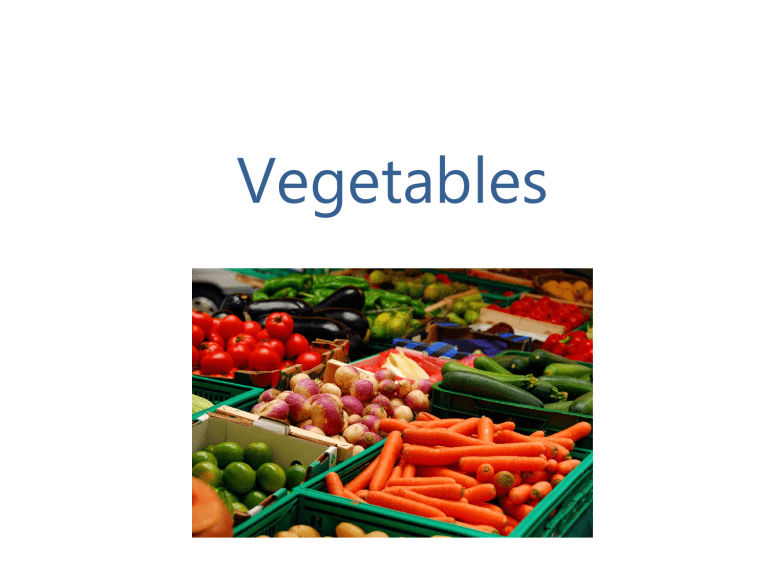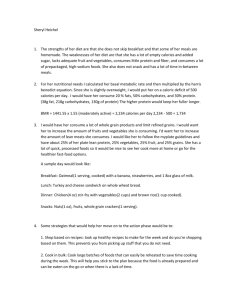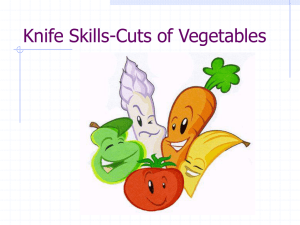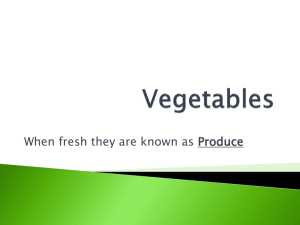Vegetables

Vegetables
Types of Vegetables
• Hundreds of different kinds of vegetables are available in the market-place. They are colorful, flavorful and nutritious. Besides being an important part of a meal, vegetables make great snacks. Most are low in calories and fat.
• Vegetables are grouped according to how they grow and what part of the plant is eaten, there are 8 groups of vegetables.
Bulb
• Usually grow just below the surface of the ground and produce a fleshy, leafy shoot above ground.
• Bulbs usually consist of layers or clustered segments.
• Examples are onions, garlic, shallots, spring onions
Root
• Root vegetables are veggies where the root is actually the vegetable.
• Roots should be hard and smooth, small roots are the most tender
• Commonly known root vegetables are beet, carrots, and even turnips.
Tuber
• Vegetables which grow underground on the root of a plant.
• These vegetables tend to be higher in starch and calories.
• Shriveled or sprouted tubers are old
• Commonly known tubers are potatoes and yams.
Stems
• The edible stalks of plants, stems support the plant.
• These vegetables have a high water content and are low in calories.
• Best quality stems have crisp, straight stalks.
• Common examples of stems are bok choy, asparagus, celery and rhubrarb.
Flowers
• Flowers are the plant’s blooms.
• Best quality flowers are crisp and firm with closed clusters
• Yellow buds on broccoli mean it’s old & strongly flavored
• Cauliflower, artichoke, broccoli
Fruits
• Vegetable fruit are fleshy and contain seeds.
• Fruit vegetables should be firm and heavy
• Cucumber, eggplant, okra, pepper, squash
(zucchini, pumpkin, acorn, yellow), tomatoes
Seeds
• These parts start the food growth process.
• They can be high in starch and higher in calories.
• They are best when freshly picked, small seeds have the best flavor
• Peas, wax beans, green beans and corn are common seeds.
Leaves
• The edible leaf of a plant.
• Leaves with dark green are high in vitamins A and C, folic acid, calcium and iron.
• Brussels sprouts, cabbage, lettuce, spinach, kale





